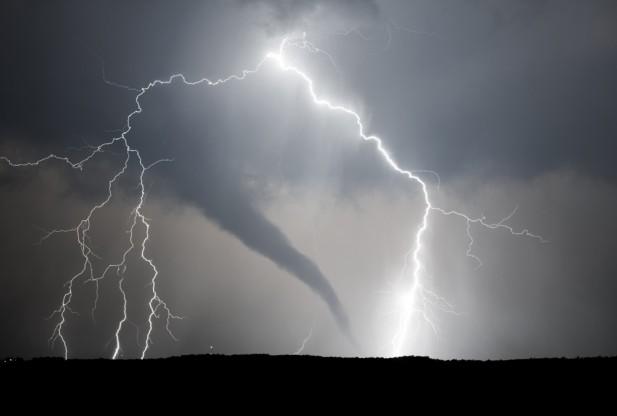
OIL & GAS SEISMIC

A recent surge in central Oklahoma earthquakes probably is linked to the disposal of oil and gas wastewater in a handful of high-volume underground wells in the state, according to research released Thursday.
The study published in the journal Science is the latest to document a possible connection between earthquakes and drilling-related activity, specifically the practice of disposing millions of barrels of wastewater from individual oil and gas wells by injecting it underground.
The research does not pinpoint a possible link with oil and gas drilling itself, or even the hydraulic fracturing fluids increasingly injected underground to help extract those fossil fuels. Most of the wastewater disposed in the Oklahoma water wells covered by the study naturally existed underground and emerged after horizontal oil and gas wells penetrated subterranean formations.
Industry leaders swiftly noted that the study does not definitively link earthquakes in Oklahoma with oil and gas drilling activity, in part because sub-surface pressure data that would be required to identify any unequivocal connection is rarely accessible. Still, the research adds to the body of evidence suggesting wastewater disposal can trigger some seismic activity, and it could heighten pressure on regulators to clamp down on the practice.
Cornell University geophysics professor Katie Keranen, who led the study, said the results suggest regulators and oil companies should avoid disposing of wastewater near major faults and do a better job monitoring the activity.
"Earthquake and subsurface pressure monitoring should be routinely conducted in regions of wastewater disposal and all data from those should be publicly accessible," Keranen said. "This should also include detailed monitoring and reporting of pumping volumes and pressures."
Already, regulators in Oklahoma, Texas and other states have been examining whether climbing oil and gas activity is triggering temblors. In March, after a series of quakes in North Texas, the state's Railroad Commission hired a seismologist to scrutinize the matter. The commission, Texas' oil and gas regulatory agency, also is considering changing the rules for wastewater disposal.
Keranen's research team used computer modeling to demonstrate that fluid migrating along fault lines from four high-rate disposal wells in southeast Oklahoma City probably was responsible for a large swarm of earthquakes as far as 22 miles away in 2008. That is a wider reach for human-triggered earthquakes than was previously believed likely.
By and large, the more than 4 million barrels of wastewater disposed in those four Oklahoma City wells each month springs out of the especially wet underground rock formations common in the area. Initially, as much as 1,000 barrels of water can flow out of these wells for every barrel of oil that is extracted — going well beyond the typical water-to-oil ratio in other regions.
Some oil companies and oil service contractors are recycling that produced water and getting rid of it in other ways, including by sending it to regional treatment facilities.
Keranen's computer models simulated what would happen to the wastewater pumped into 89 of Oklahoma's disposal wells using actual injection rates reported from the activity, tracking fluid movement and escalating underground pore pressure away from the sites — corresponding with a swarm of earthquakes and seismic activity near Jones, Okla.
The models suggested that when the migrating fluids encounter underground fault lines, the increasing pressure can push those that are already "critically stressed" to rupture first, with additional activity triggered as fluid pressure builds over a widening area, the study says.
The researchers suggest the four highest-rate wells near southeast Oklahoma City were responsible for about 85 percent of the pore pressure changes near the Jones earthquakes, and say the 85 other smaller-volume wells to the northeast contributed the remaining 15 percent.
Mike Terry, president of the Oklahoma Independent Petroleum Association, stressed that disposal wells have been used in the state for more than half a century — sometimes exceeding current disposal rates.
He warned against "a rush to judgment based on one researcher's findings."
"Because crude oil and natural gas is produced in 70 of Oklahoma's 77 counties, any seismic activity within the state is likely to occur near oil and natural gas activity," he said. "We have also seen increased seismic activity in North America, including Idaho, Virginia, Arizona and northern Mexico, where dewatering projects and unconventional oil and gas development are nonexistent."
A number of theories have been advanced for some of the recent seismic activity in Oklahoma, including an earthquake and aftershocks in Prague, Okla. in 2011. The Oklahoma Geological Survey last year concluded the Prague earthquake was the result of natural causes — not wastewater injection. Other research has examined whether the ongoing drought in the state is a contributing factor.
So far in 2014, Oklahoma has had more earthquakes over magnitude 3 than California.
fuelfix.com



